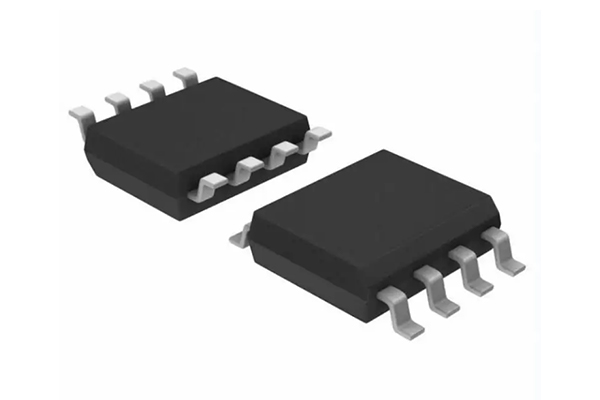EV Batteries: A Complete Overview
Description
Electric vehicles (EVs) have gained popularity owing to increased environmental awareness and improvements in battery technology. Batteries are the critical components that determine the range, efficiency, cost and lifespan of the vehicles.
There are several battery technologies for electric vehicles, including lithium‑ion (Li‑Ion), nickel‑metal hydride (NiMH) and prospective solid‑state batteries. Their differences account for why certain technologies are predominant in specific applications.
Lithium‑ion Batteries (Li‑Ion)
Lithium‑ion batteries are currently the predominant choice in the electric vehicle sector due to their high energy density, relatively long service life and favourable charging characteristics. Lithium‑ion batteries operate by transferring lithium ions from the cathode to the anode during charging and in reverse during discharging, thereby storing and releasing electrical energy. Common cathode materials include Lithium Nickel Manganese Cobalt Oxide (NMC) and Lithium Iron Phosphate (LFP), with each material providing distinct benefits. These batteries are compact, lightweight and can provide a range of approximately 200 to 400 miles per charge.
However, Li‑Ion batteries also have limitations, such as thermal instability; consequently, advanced cooling systems are required to manage the generated heat. Their complex chemical composition makes recycling difficult, which raises environmental concerns regarding disposal.
Nickel‑Metal Hydride (NiMH) Batteries
Nickel‑metal hydride batteries were among the first commercial battery technologies used in hybrid electric vehicles and were widely implemented in the first generation of Toyota Prius vehicles. NiMH batteries utilise hydrogen‑absorbing alloys at the negative electrode and nickel oxyhydroxide at the positive electrode. Their primary advantages are durability, a long cycle life and a higher tolerance to misuse compared with other battery types.
On the downside, NiMH batteries exhibit a lower energy density than lithium‑ion batteries, resulting in heavier battery packs and a reduced driving range. Additionally, they are subject to the memory effect. Repeated partial discharge cycles reduce capacity, thereby necessitating occasional full discharges to restore the battery’s full capacity.
Solid‑state Batteries
Solid‑state batteries represent a promising battery technology for future electric vehicles. In contrast to conventional batteries that use liquid electrolytes, solid‑state batteries incorporate solid electrolytes. This design increases safety, given that there is no risk of electrolyte leakage or thermal runaway. Solid‑state batteries can also offer a higher energy density, thereby providing longer ranges and shorter charging times.
Automobile manufacturers such as Toyota, Volkswagen and BMW have invested in developing this technology, given that they expect solid‑state batteries to improve the performance of electric vehicles. The technology is still in the development stage, and challenges regarding manufacturing costs, electrolyte stability and scalability currently impede mass commercialisation.
Table with Data on Utility and Application
The following table summarises the advantages and practical uses of the three battery technologies for electric vehicles:
|
Battery Type |
Energy Density |
Lifespan |
Charging Speed |
Cost Efficiency |
|
Li‑Ion |
High |
Good |
Fast |
Moderate |
|
NiMH |
Moderate |
Excellent |
Moderate |
Good |
|
Solid‑state |
Very high |
Excellent |
Very fast |
Low (currently) |
This comparative data clarifies why lithium‑ion batteries are presently preferred, why NiMH remains relevant for hybrid vehicles and how solid‑state batteries could soon redefine performance standards for electric vehicles. Further information is available at Stanford Advanced Materials (SAM).
Frequently Asked Questions
What is the lifespan of electric vehicle batteries?
Electric vehicle batteries typically last 8–15 years, depending on the technology, usage patterns and maintenance practices.
Can EV batteries be recycled?
Yes, electric vehicle batteries, particularly lithium‑ion batteries, can be recycled; however, current procedures are complex and are continually being refined.
How long does it take to charge an EV battery?
Standard charging times for electric vehicles range from 20 minutes (rapid charging) to several hours (standard home charging), depending on battery capacity and charger type.
Are solid‑state batteries available commercially?
Solid‑state batteries remain in the experimental stage and are not yet available commercially. Mass production is expected between 2027 and 2030.
Why are Li‑Ion batteries preferred in most electric vehicles?
Li‑Ion batteries offer an effective combination of energy density, cost efficiency and charging speed, which is why they are commonly chosen for current electric vehicles.

 Bars
Bars
 Beads & Spheres
Beads & Spheres
 Bolts & Nuts
Bolts & Nuts
 Crucibles
Crucibles
 Discs
Discs
 Fibers & Fabrics
Fibers & Fabrics
 Films
Films
 Flake
Flake
 Foams
Foams
 Foil
Foil
 Granules
Granules
 Honeycombs
Honeycombs
 Ink
Ink
 Laminate
Laminate
 Lumps
Lumps
 Meshes
Meshes
 Metallised Film
Metallised Film
 Plate
Plate
 Powders
Powders
 Rod
Rod
 Sheets
Sheets
 Single Crystals
Single Crystals
 Sputtering Target
Sputtering Target
 Tubes
Tubes
 Washer
Washer
 Wires
Wires
 Converters & Calculators
Converters & Calculators
 Write for Us
Write for Us





 Chin Trento
Chin Trento



